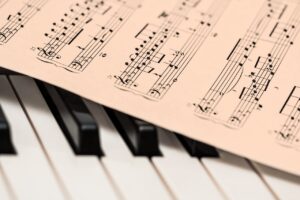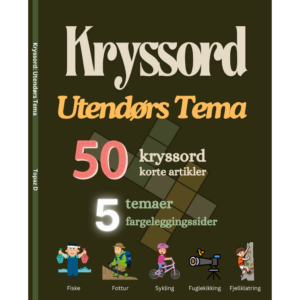
Explore & Play
Discover interesting topics and solve the accompanying crossword puzzle.
Composer Crossword Puzzle Challenge
Table of Contents
Composer crossword
You can either fill in the crossword puzzle directly on this page or click the button in the bottom right corner to print it for free.
——————————————
Exploring Influential Composers: Innovations, Inspirations, and Insights

Introduction
What makes a composer truly influential? Is it a melody that lingers long after the last note fades, or an innovation that quietly reshapes music’s very language? This article invites you to explore the enduring impact of some of classical music’s giants—Bach, Mozart, Beethoven, Chopin, Tchaikovsky, Wagner, Verdi, Vivaldi, Grieg, and Haydn—and to consider how their genius informs the music we cherish today.
Understanding these composers is more than a journey through history; it is an unveiling of the foundational threads woven into contemporary soundscapes. Their innovations echo in modern compositions, bridging the gap between timeless tradition and evolving creativity. By delving into recent research and fresh perspectives, we encounter not only the origins of their artistry but also how their legacies continue to inspire new generations.
As we embark on this exploration, consider this: each composer, in their subtle yet profound way, extended the language of music — shaping the dialogue between past and present. What new revelations await as their stories unfold? And how might these insights deepen your appreciation of the music that surrounds us? Let us begin.

Johann Sebastian Bach
Imagine the world of music before Johann Sebastian Bach—a landscape ripe with promise but lacking the precise architecture we now take for granted. Bach’s innovations in musical notation did more than tidy up a system; they crafted a language that continues to frame how composers think and write. His ability to weave complex polyphonic lines with mathematical clarity laid foundations so elemental that modern notation itself seems but an elegant evolution of his foresight.
Beyond notation, Bach’s structural genius redefined composition. His fugues and counterpoints are more than technical feats; they feel like conversations across time, bridging intellect with emotion. Contemporary composers—whether immersed in classical tradition or contemporary genres—find in Bach’s techniques a trove of inspiration, a blueprint for balancing rigor with expressive freedom.
Recent research, as outlined by the Piano Encyclopedia in 2025, reveals how scholars are decoding Bach’s innovations with fresh eyes, uncovering insights that resonate even amid today’s digital scores and performance software. Here lies a truth worth savoring: Bach’s enduring legacy is not a relic but a living dialogue, continuously shaping music’s evolution.
Might we then consider Bach not simply as a composer of the past but as a timeless architect of musical thought? In his work, complexity meets clarity—an elegant reminder that innovation grounded in profound understanding remains the hallmark of enduring art.

Wolfgang Amadeus Mozart
What new secrets might Mozart’s genius still yield? Recent scholarship in 2024 invites us to approach his compositions not merely as timeless masterpieces but as richly layered dialogues between form and emotion. Emerging analytical methods reveal subtle intricacies in Mozart’s thematic development—how his melodies often flirt with unexpected harmonies, like whispers that deepen upon closer listening. Such insights illuminate his creative process, showcasing a composer who balanced intuitive inspiration with meticulous craftsmanship.
Mozart’s influence resonates far beyond the concert hall. His fingerprints can be found woven into the fabric of global music culture, from classical repertoire to cinematic scores and jazz improvisations. This universality stems from an elegance and clarity that transcends epochs, reminding us that true artistry is both intimately personal and universally accessible.
Modern adaptations of Mozart’s work, informed by these fresh perspectives, reimagine his pieces with renewed vibrancy, proving that innovation and tradition are not adversaries but partners in perpetuity. For those who subtley ponder why Mozart’s melodies remain so irresistibly engaging, these research developments offer a refined answer: his music is a living conversation—one that continues to inspire, challenge, and enchant with each new interpretation.

Ludwig van Beethoven
In the twilight of his career, Beethoven emerged not merely as a master composer but as a resolute innovator, reshaping the very fabric of musical expression. His late works—those profound sonatas, string quartets, and symphonies—embrace complexity with unparalleled depth, inviting listeners into a realm where traditional boundaries dissolve. Here, dissonance finds purpose, and form bends toward introspection, illuminating the human spirit’s resilience amid struggle.
Consider the Late String Quartets, composed as Beethoven grappled with deafness. These pieces unfold like intimate dialogues, rich with emotional nuance and structural daring. They heralded an evolution in musical language, inspiring future generations to explore contrast and ambiguity with newfound courage. His Ninth Symphony, culminating in the choral finale with Schiller’s Ode to Joy, not only extolled unity but also redefined symphonic possibilities, blending vocal and orchestral forces as a manifestation of universal brotherhood.
Beethoven’s late period innovations ripple into modern music theory and practice. His expansion of harmonic vocabulary and rhythmic complexity paved pathways that composers from Romantic virtuosos to contemporary artists traverse today. The emotional candor he infused into form persists as a beacon for those seeking authenticity over convention.
Intriguingly, Beethoven’s legacy intersects elegantly with Chopin’s poetic sensibility. While Beethoven forged monumental architectural soundscapes, Chopin distilled intimate, expressive moments on the piano. Together, they underscore a spectrum of inspiration—from grandeur to delicacy—that continues to captivate modern musicians. This dialogue between breadth and intimacy offers a compelling framework for understanding artistic evolution.
Recent performances reflect a renewed fascination with Beethoven’s later works, often exploring historically informed interpretations that balance fidelity to original intentions with contemporary sensibilities. This resurgence hints at the enduring relevance of his innovations, inviting us all to reconsider his music not as relics of a bygone era, but as living, breathing art that challenges and enchants.
Might we then ask: how does Beethoven’s fearless late period invite us to embrace transformation in our own creative journeys? Perhaps in his unwavering pursuit of expression despite adversity lies a timeless lesson—one where innovation arises not from ease, but from the profound depths of resolve.

Frédéric Chopin
What is it about Chopin’s melodies that continue to echo in the rhythms of modern pop music? His gift was not merely in crafting beautiful melodies but in distilling emotion into phrases that are both succinct and unforgettable. Think of his nocturnes and mazurkas as intimate conversations—each note carefully chosen, each pause pregnant with feeling. This economy of expression, where every musical gesture has purpose, laid the groundwork for how contemporary songwriters approach hook and theme creation.
Chopin’s influence gently infiltrates popular culture not as overt quotation but through nuanced adaptation. His penchant for lyrical simplicity married to expressive depth invites a fresh perspective on melody—one that resonates beyond classical concert halls into the mainstream ear. It is no surprise that modern composers and producers draw inspiration from this balance of elegance and accessibility, whether consciously or subliminally.
The connection between Chopin and Tchaikovsky further illuminates his stylistic reach. Tchaikovsky himself acknowledged Chopin’s mark on his compositions, weaving similar melodic contours and harmonic colors into his own Russian Romantic tapestry. Such a lineage speaks to the timeless dialogue between composers, where influence is less about imitation and more about a shared language of feeling.
Recent cultural analyses, such as those featured on Google Arts & Culture and The Listeners Club, celebrate this crossover—revealing how Chopin’s ethos embraces reinvention while maintaining a core of lyrical purity. So when one hears a catchy melody in today’s pop charts, might it not be worth pondering: could the spirit of Chopin be quietly at play?
In appreciating Chopin, we grasp more than mere notes on a page; we encounter a testament to the art of melodic storytelling—where elegance endures by adapting gracefully to new voices and evolving soundscapes. This is the subtle mastery that defines Chopin’s lasting imprint on music’s living continuum.

Pyotr Ilyich Tchaikovsky
Have you ever noticed a whisper of Chopin’s tender lyricism weaving through Tchaikovsky’s sweeping melodies? The connection is no mere coincidence but rather a deliberate, almost reverential dialogue between two masters separated by borders yet united by musical sentiment. Tchaikovsky’s “Un Poco di Chopin,” an evocative homage, crystallizes this exchange—a subtle borrowing of Chopin’s melodic elegance and harmonic nuance, refracted through a distinctly Russian romantic prism.
What makes Tchaikovsky’s adaptation all the more fascinating is how he entwines Chopin’s intimate phrasing with the grandeur and emotional breadth characteristic of Russian romanticism. This synthesis crafts a soundscape where delicate piano lines converse with lush orchestral textures, rendering a music that is at once personal and expansive. In this light, Tchaikovsky’s music becomes a bridge—not only between nations but between the intimate and the monumental.
Contemporary critics and scholars increasingly appreciate how Tchaikovsky absorbed European influences without relinquishing his cultural identity. His works reveal a cosmopolitan sensibility that embraces foreign inspiration while asserting a unique voice. This duality offers fertile ground for reflection: how does one honor tradition while forging innovation? Tchaikovsky’s answer echoes timelessly in every note he composes.
For those inclined to delve deeper, The Listeners Club offers an illuminating exploration of this musical homage, tracing the subtle threads that stitch Chopin’s essence into Tchaikovsky’s fabric. Such insights enrich our appreciation not just for these individual artists but for the intricate tapestry of cultural exchange that continues to shape the classical canon.

Richard Wagner
One might wonder how to approach Wagner’s colossal oeuvre without losing the thread of its original intent—the very sound world he envisaged in the 19th century. Recent historically informed performance practices have sought just that: to peel back layers of modernization and return to the authentic textures crafted by Wagner himself. Musicians and scholars now employ period instruments, replicas of those that Wagner would have known, to resurrect the tonal colors and dynamic nuances that contemporary symphony orchestras often smooth over.
Imagine the lush yet raw timbres of a mid-1800s Wagnerian orchestra — wooden flutes, natural horns, gut-stringed violins — gently enveloping the listener, revealing an intimacy and immediacy sometimes lost amid the grandeur of modern steel and mechanics. Such approaches challenge our habitual interpretations, inviting us to reconsider Wagner’s intentions not through the lens of sheer volume or technological enhancement, but through balance, breath, and immediacy.
This revival of authentic sound has rippled through the operatic and symphonic repertoire, influencing conductors and performers eager to meld historical fidelity with fresh artistic insight. The “Ring Cycle,” that monumental tapestry of myth and leitmotif, gains renewed depth when heard with instruments tuned to Wagner’s own pitch standards. Critics and aficionados alike note how this can recalibrate our emotional engagement, offering a more nuanced, even humanized Wagner.
In essence, these practices do more than resurrect a historical sound—they reawaken the spirit behind Wagner’s visionary compositions, reminding us that to engage deeply with such works is to enter a living dialogue between past and present. As The New York Times recently observed, this interplay between authenticity and interpretation not only enriches the music but also preserves its timeless power in an ever-evolving cultural landscape.

Giuseppe Verdi
There is a timeless allure in Verdi’s operas—a delicate balancing act between soaring melodies and raw human emotion. He transformed the operatic form not merely by composing captivating arias, but by weaving drama and music into an inseparable fabric. Verdi’s genius lies in his ability to marry lyrical beauty with narrative intensity, allowing characters to breathe and stories to unfold with cinematic flair long before cinema’s dawn.
Consider how Verdi shaped each opera as a compelling drama, where the orchestra and voices converse as equals, driving the plot forward rather than pausing for mere ornamentation. This approach elevated opera from a display of vocal virtuosity to a profound storytelling medium, a tradition that echoes in today’s musical theatre. Modern directors and composers find in Verdi’s works a blueprint for integrating emotional authenticity with structural innovation.
Contemporary reinterpretations embrace Verdi’s spirit of bold reinvention. Productions now explore fresh stagings, sensitive to historical context yet unafraid to infuse modern sensibilities. Whether through minimalist sets or nuanced musical direction, the aim is to preserve the emotional core that Verdi so masterfully composed. In doing so, his legacy continues to inspire, reminding us that opera remains an ever-evolving dialogue between past and present—a testament to enduring artistry.

Antonio Vivaldi
There is a certain charm in correcting historical whispers, especially when it concerns a figure as vivid as Antonio Vivaldi. Often, the mere mention of his name conjures the image of “The Four Seasons,” a suite so familiar it borders on cliché. Yet, how often do we pause to consider the nuances beneath these popular titles? The commercial names assigned to Vivaldi’s concertos—like “Spring” or “Summer”—are actually later inventions, not penned by the composer himself. They frame the listener’s imagination but can also confine it, masking the rich musical narratives woven within.
Modern musicology invites us to peel back these layers, revealing that Vivaldi’s concertos are less programmatic stories and more architectural marvels of baroque craftsmanship. His inventive use of ritornello form, daring harmonic turns, and vivid textural contrasts showcase a compositional mind that shaped the very fabric of instrumental music. By focusing on scholarly research, we learn to listen afresh—to appreciate how Vivaldi’s work transcends mere seasonal depiction and instead embodies a visionary dialogue between soloist and ensemble.
His influence radiates well beyond the baroque era, seeding techniques that resonate in later classical and even contemporary compositions. Recent academic studies, such as those published by the University of California Press, deepen our understanding of how Vivaldi’s concertos function as sophisticated musical representations rather than simple program music.
In rediscovering Vivaldi in this light, we offer ourselves a subtle transformation—a chance to admire not only the brilliance of his melodies but also the enduring ingenuity of his form. It is through this nuanced embrace that the baroque master’s legacy continues to elevate and inspire, inviting a listening experience both timeless and refreshingly new.

Edvard Grieg
One might wonder how a composer’s quirks echo within their music. Take Edvard Grieg—a figure not merely defined by his Nordic melodies but also by an endearing personal talisman: a small frog doll. Legend has it that this charming amulet accompanied Grieg, a whimsical token of good luck nestled amid his creative process. Such anecdotes, casually recounted in classical music circles and fan blogs alike, offer a rare glimpse into the human side of a composer often enveloped in the solemnity of Romantic reverence.
Grieg’s influence unfurls beyond these charming idiosyncrasies, deeply rooted in the soil of Nordic nationalism. He wove the spirit of Norway’s folk traditions into the elegant tapestry of Romantic music, crafting themes that felt both personal and universally evocative. This fusion of national pride and emotional expression shaped not only his own compositions but also signaled a wider cultural movement, inspiring composers to embrace heritage as a vital musical language.
In reflecting on Grieg’s legacy, one contemplates the subtle ways individual character and cultural identity intertwine, elevating music from mere notes to a resonant narrative of place and self. Perhaps it is here—the convergence of the personal and the national—that Grieg’s enduring appeal resides, inviting us to consider how the past whispers through melody yet speaks clearly to the present.
For those intrigued by this blend of charm and cultural resonance, the Audio Network Blog provides delightful insights and affectionate musings that enrich our understanding of Grieg’s unique presence in the classical canon.

Joseph Haydn
Few names resonate as profoundly through the corridors of classical music as Joseph Haydn’s, often hailed with justified reverence as the “Father of the Symphony.” His deft hand shaped the very architecture of the classical era, laying foundations that Mozart and Beethoven would both build upon and transcend. One might imagine Haydn as an architect of sound, drafting blueprints for form and orchestration with a clarity and balance that felt effortlessly natural yet innovatively precise.
Haydn’s genius was not merely in the notes he penned but in the structural innovations he championed. He refined the four-movement symphonic form—a dance of themes and motifs elegantly balanced like the pillars of a grand edifice—and enriched sonata form, inviting thematic development to unfold like a graceful narrative. His orchestration displayed a mastery of texture and color, bringing instruments into dialogue with one another in ways that suggested an intimate conversation rather than a mere collection of sounds.
This pioneering spirit did not go unnoticed. Mozart, a dear acquaintance, absorbed Haydn’s lessons with admiration, while Beethoven, sitting at the cusp of the Romantic age, wove Haydn’s influences into his profound, emotive compositions. The legacy Haydn imparted was a vocabulary of refined elegance and structural clarity that continues to inform not only concert halls but teaching studios worldwide.
Today, Haydn’s enduring relevance is vivid in the practice rooms of aspiring musicians and the programming of orchestras alike. His works are both foundational studies in music education and living, breathing expressions that demand both precision and passion in performance. As one contemplates Haydn’s impact, it becomes apparent that his music is less a relic of the past and more the cornerstone of a language that still speaks with clarity and grace.
In embracing Haydn’s contributions, we encounter more than historical milestones; we touch the essence of classical rigor fused with creative innovation—a timeless dialogue inviting us to listen closely and discover anew.

Conclusion
As we traverse the landscapes shaped by these remarkable composers, a vivid tapestry of innovation and inspiration unfolds—each thread woven with distinctive brilliance. From Bach’s pioneering strides in musical notation, through Mozart’s masterful interplay of form and emotion, to Beethoven’s revolutionary late works that still challenge our boundaries, the past resonates profoundly within the present.
Chopin’s melodic eloquence whispers through the textures of popular music, while Tchaikovsky’s symphonic romanticism pays subtle homage to his Polish predecessor, revealing how cultural dialogues transcend time. Wagner’s operatic grandeur reimagined through historically informed performances reconnects us with authentic soundscapes. Meanwhile, Verdi’s dramatic storytelling breathes new life into modern theatre, just as Vivaldi’s baroque vitality continues to invite scholarly rediscovery. The idiosyncrasies of Grieg’s personal lore remind us of the human heart behind the music, and Haydn’s foundational craftsmanship still underpins orchestral tradition.
This intricate web of influence underscores a singular truth: classical composers are not distant relics, but vibrant architects of today’s musical world. Their legacies invite us to listen anew, to find fresh meaning amid familiar melodies. How might your own appreciation evolve when each note holds a lineage of passion and ingenuity?
For those drawn deeper into this exquisite dialogue, the sources we’ve explored offer portals to richer understanding. With every encounter, classical music reveals itself not merely as history, but as an enduring, living art—gracefully bridging past and present, inviting your personal discovery in this perpetually unfolding story.
Share to...
I hope you enjoy the content.
Want to receive our daily crossword puzzle or article? Subscribe!
You may also be interested in
Share to…
Want to receive our daily crossword puzzle?
-
Jigsaw Puzzles
Maine Coon Cat Ink Wash Puzzle 250 | 300 | 500 Pieces
kr 348,00 – kr 439,00 Select options This product has multiple variants. The options may be chosen on the product page -
Jigsaw Puzzles
Majestic Unicorn Watercolor Puzzle 250 | 300 | 500 Brikker
kr 348,00 – kr 439,00 Select options This product has multiple variants. The options may be chosen on the product page -
Jigsaw Puzzles
Fish Market in Norway Jigsaw Puzzle 250 | 300 | 500 Pieces
kr 348,00 – kr 439,00 Select options This product has multiple variants. The options may be chosen on the product page

















